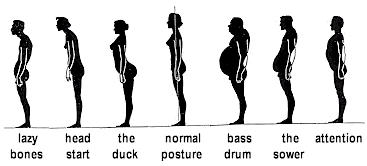So I have had a year of being professionally 'stuck', and it has all suddenly come free and stared flowing again, I am trying to (very gently, carefully and compassionately) roll around in my head and understand why I could not feel the forward motion I needed in one particular work environment, but many other people could and still can. What is it that was so different in my circumstances, my approach, my accumulation of experiences, the little voice in my head that tells me a story about what is important and unimportant, that is different to others? Why did I end up in such angst? I am not trying to be self-critical, or critical of that particular workplace (although both are easy to fall into). Just trying to consider and meditate on the corners of the square peg and the curves of the round hole. So next time I know what to do differently, with less angst and, possibly, either more success, or a more sound and achievable definition of success.
1. Not about log jams.
During the worst weeks between June and September, the same thing happened multiple times. A senior person who I respected took me aside and told me not to lose heart, they each used a phrase similar to "You should keep being demanding; that is how you will trigger change in the world." Inside this brain of mine, I do not intend to be, or think of myself as demanding. On reflection, from the outside I might seem demanding... or with a positive framing, how about earnest, hopeful, determined, focused on outcomes, and trying to understand the stuck-ness of a system. Maybe holding high standards for myself and others. Maybe a bit too vocal. Maybe a bit too curious. Maybe that adds up to 'demanding'.
My younger children are still a bit demanding. They are kids. They are entitled to be demanding. They are supposed to demand attention, icecreams, help finding their shoes, their favourite songs in the car. Adults are supposed to be mature, measured, self-sufficient - and depending on your background and context, using the adjective 'demanding' about an adult can be quite pejorative. It's a class-based thing too, working class family stories try to replace 'demanding' with 'enduring' while the rich expect, demand and obtain what they want - and the company was a class-driven system - maybe 'demanding' is a key personality trait of those leaders, along with 'charismatic' and 'politically savvy': that was the alchemy that originally got onto leadership track...?
Demanding is not the point of this post.
Log jam is the point of this post.
2. About log jams.
There are small log-jams
And big log-jams
Perhaps...
The bigger the water system, and/or
The more aggressive the through-put of logs, and/or
The more irregular the flow (curves, rapids, obstructions etc) and/or
The longer the logs have to accumulate
The bigger and more intractable the log-jam has the potential to become.
So could it be that the group I was in was, well, bound up? In need of a dose of Spirulina? That the accumulated weight of all those years of trauma and bad process and incomplete initiatives and the revolving leadership door just added more and more logs behind the jam, and that in my earnestness I was adding to the problem? If that is the case, extracting me and others who are elders and others who care intensely is a massive step forward for the system. Get rid of the backlog of previous failed attempts, junk the lot, erase the memories, start from ground zero. Or at least from a fresh perspective.
3. Unsticking log jams.
The first useful part of the log-jam metaphor is that to shift it, you need to be in the right spot and you need to push the right log. No amount of pushing the wrong spot will un-stick it. Sometimes there need to be multiple shoves in multiple spots.
It may be no criticism of me that nothing I tried to do succeeded (by my definition at the time). It could be simply that I was in the wrong place within the system. Or that I could have moved the log-jam in concert with others in the system, if we pushed on the multiple key logs at the same time, but I never got coordinated with anyone in the other key spots. Or maybe I did push the system and I was just too impatient - too demanding - that the logs are still creaking and the jam is still flexing and in a second or two it will all start to flow again.
And my current working idea/hope/theory is that triggering a small change in the right part of a complex system will pull the whole system into a different mode of function may also have merit... I am always looking for the key log.
4. Not unsticking log jams
A lot of life thrives in a long-established log-jam, regardless of whether it was accidentally or deliberately created. In fact, engineered log jams (ELJs) are a thing. For fish habitat in Idaho.
There are also a lot of things that seem like log jams but aren't log jams.
I think one of the objectives of those who live in, on, or with a log jam is that the log jam should remain exactly where it is. One of the things that fusses me about the digital revolution (and technophilia in general) is that disruption without common purpose can trigger bigger community problems. But even when there is a purpose for disruption, a clear system benefit, those whose livelihoods depend on the continuity of the floating structures are (if aware of the disruptive efforts) going to put their efforts towards stopping the disruption.
A large, relatively ancient organisation is by its nature pretty log-jammy. And properties such as bureaucracy, a severe case of hierarchy, and stupid time consuming rituals like hours and hours of web-based training, are evidence that the system does not want to move, and tools by which the people who live in that system resist movement.
Maybe it was just foolish optimism to try so hard.
5. To jam or not to jam?
I went to a workshop on risk and 'black swan events' which got me thinking about cascading failures. I haven't finished the series of posts yet but the essence is this:
Some systems are made vulnerable to catastrophe, without their knowing it, Catastrophe gets triggered by an apparently small perturbation of normal functioning.
Some systems are made vulnerable to catastrophe, without their knowing it, Catastrophe gets triggered by an apparently small perturbation of normal functioning.
One log stuck on a rapid. But the environment and context cascades a jam around it.
Or one log which finally works free from an established jam. But the fact that it was a key log makes the entire functional, vibrant edifice disintegrate.
Is a crisis the making of a log-jam?
Or the abrupt and catastrophic destruction of a system held together by log-jams?
Or both/either, depending on your perspective?
In the risk management workshop, the presenter put forward the idea of - sometimes counter intuitively - slowing down the system, slowing down reactions, to manage or contain the cascade.
I wonder if I should personally look less about speed of adaptation and flow, and more about system stability, diversity, resilience etc. Whether I need to practice the art of not minding that things don't get through the system. Less about the goal. More about the journey.
6. That's it.
If you've made it this far through my post.... :)
If you've made it this far through my post.... :)
Some Youtube links.
Jam:
Trees (and other things):
A river
(I reckon this girl's got groove. I like her song about horses too, but it's not about a river.)
(I reckon this girl's got groove. I like her song about horses too, but it's not about a river.)


















